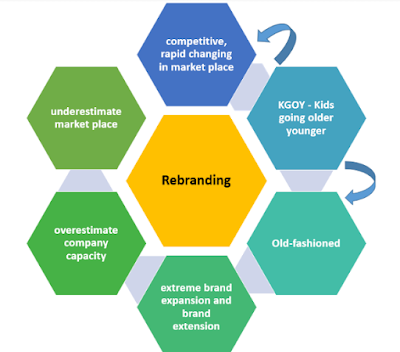The company I want to study is the TUI.com company. TUI.com – the German travel company which offers travel deals, travel operators for consumers. TUI is active in both B2C and B2B business sector. On the one hand, offers and operates holiday trips directly to their consumers. All of the activities on their E-Business are aimed straightforwardly to the end-users. On the other hand, TUI is also active in the B2B sector. Beside of operating a travel deal for consumers, TUI also offers hotels, in which their consumers should stay during their holidays, or which airlines company they should take into consideration to get the best price for flights.
Challenges/Risks
of E-Business
- Online booking systems must be well-established, user-friendly and able for everyone to book the trip or the holidays by themselves
- Transaction risks including default on order taking/giving and default on payments
- Online presence and corporation’s reputation is highly dependent from customers
- Optimization of online presence und user interface across all devices (tablets, smartphones, laptops, desktop PCs, etc.)
- Follow the trend and forget to study the market strategically to get customers insights
- Limited paying methods discourages buying decision processes
- Foreign exchange risks, interest risks, internet security risks, political and economic policies of countries
- Pricing environment challenging due to competitive market
- Economy decline and impact of customer demand
Benefits of E-Business
- Reach more consumers and business customers from around the world through Internet
- Get a certain number of customers because of 80% of travelers consult the internet when researching a holiday or a trip.
- Expand the market globally
- Expand low-cost airlines
- Using sub-offers or additional offers, such as restaurants choice, hotel and transportation choice to involve planning and buying processes of customers.
- E-Business is a core business of TUI Groups and it compensates for local travel agencies which are no longer effective and reach a limited number of customers
- Speed and efficiency in terms of searching, comparison, transaction
- Have a low transportation and distribution costs. All transactions are get done online
- Earn more income when using their website to advertise the other business partners
- Have a large amount of customer information to arouse interests, raise awareness and retarget interest of customers
- Price transparency and well-established website generate more trust in customers.
Digital Marketing aspects:
Contents: Text
and Multimedia web contents
Text:
- Information about trips, bookings, hotels and transportation choices
- Cstomer service and contacts information
- Recommendation and Inspiration for travel destinations.
- Reviews, evaluations, rankings and feedbacks from company and traveler/ service users
- Special deals and discounts
- Internal links to additional offers, such as hotels, flights, accommodations, transportations, cruises, tour programs
- Information regarding travel insurance, travel policy, newsletter, catalogue, etc.
- Categories for more personalized and selective searching
- Blog and traveling calendar – sharing experience and tips for traveling
- Internet security and customer information security.
Multimedia web contents:
- Animation: GIF images
- Images: photos of travel destinations, landscapes, sightseeing,
- Sound + Video: travel destinations and customer experience
Channel: website,
blog, Facebook, Twitter, Instagram and Google+
Customer:
End-user and business partner (hotel, restaurant, airlines)
Competitor:
other travel agencies in Germany, such as Opodo.de, Ab-in-den-Urlaub.de,
ThomasCook.de, dertour.de and other outbound travel businesses, such as Kuoni Travels, Barrhead Travels, The Ultimate
travel Company, Cox and Kings, etc.
How the
company is managing with them?
Competitor: keep up with them by developing apps reservation and booking holidays
Customer:
try to engage with them by various social media channels and offering
user-friendly and personalized services.
Company evaluation:
In my point of view, TUI Group has high potential to be successful, but there are some drawbacks which prevent the company from being a market leader in this tourism industry. On the one hand, they understand the new trends in the tourism sector. The TUI.com exploits the digital tools and methods to expand its market and keep ahead of their competitors. On the other hand, the company seems to lack understanding of new trends in the tourism and engagement with their customers.
Although the TUI company offers the customers a wide range of deals regarding travel destinations, flights and hotel choices with a competitive price, there is still a lack of interaction between the company and its customers. Many tourism companies have set their goals as giving the customers information as much as possible. By using digital tools to make relevant information appear directly to the customers repeatedly, many companies think that they can influence the customers’ buying decision and, therefore, make more sales and profits. Tourism nowadays is much more than that. The today customers ask more for conversation, inspiration and entertainment. They want to get involved in anything they want to purchase.
The content in TUI’s website shows that there is still a lack of contents which focus on a specific group of customers. Even though the contents are not really “one size fits all”, they are still too informative. So that customers just go to the company because the company might give them an affordable price for the trip, but not because that the company makes them special. However, when people are included and activated, they remember the company’s messages better.
When we take a look at the trends of tourism, many people say that they want to be travel and experience the place they go as locals, not as visitors. The company should see this aspect as an opportunity to offer the customers more personalised deals.
According to Site Analyzer, TUI.COM only score 64.6/100, and the content aspects need to be improved.







